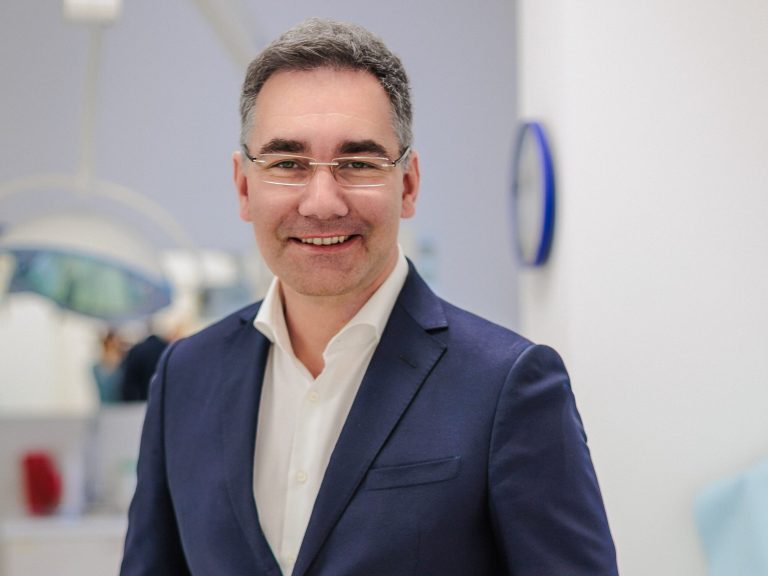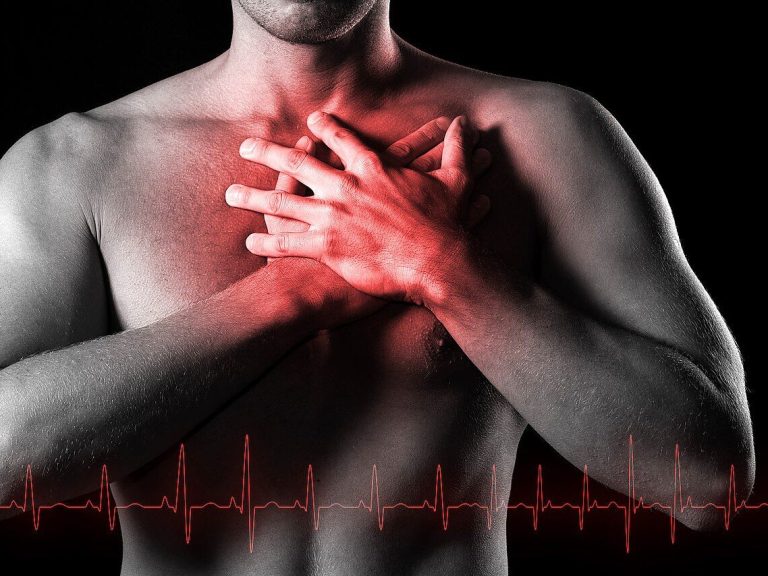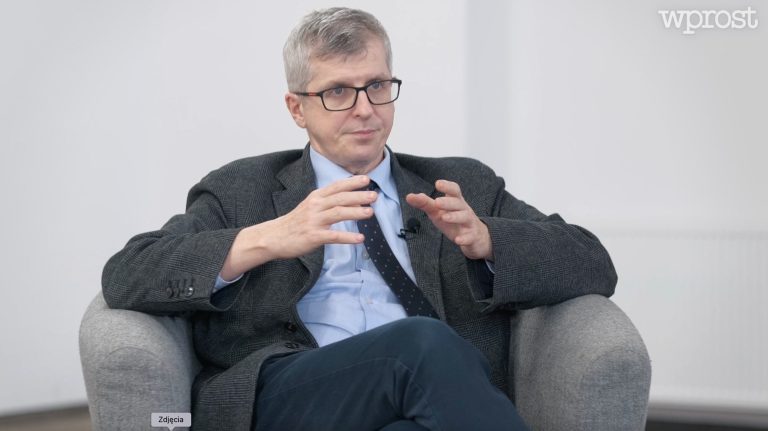A cardiologist comes to a physicist and… what comes out of it – a new look at the heart and cancer

About physicists' surprise when it turned out that too regular heart rhythm indicates disease; about heart cells behaving like… a collective (!), about further surprises that arise when physicists talk to doctors and how this can change the treatment of patients – says Dr. Hab. engineer Teodor Buchner, medical physics specialist.
Katarzyna Pinkosz, Wprost: Physicists from the Warsaw University of Technology, together with cardiologists from the National Institute of Cardiology, are working on creating a device that will help assess the result of an ECG test with the help of artificial intelligence. Will this work?
Ph.D. engineer Teodor Buchner: We are working on it, and the list of hospitals cooperating with us is longer, including the Children's Health Center, Wolski Hospital and the Baby Jesus Hospital. But Anin was the first. Our cooperation with cardiologists began in the 1990s. Doctors from Anin: Dr. Wanda Popławska and Rafał Baranowski approached us, saying that they had a problem because there was a group of young people who were dying of cardiac causes, although they did not have any organic heart disease. .
Cardiologists did not know what the cause of these sudden deaths was or how to estimate the risk; they were so determined that they asked physicists for help. They were willing to learn the “language” of physics to get a clue about who was at risk of sudden death. I admired their determination.
Were you able to diagnose why these young people were dying?
Yes, although, as usual in science, the answer raises new questions. The pioneer of this research at the University of Technology was my mentor, Professor Żebrowski, who dealt with chaos theory. We can summarize this theory by saying that there is information in noise. In the case of cardiology, such “noise” was the heart rhythm. It is not equal, the heart is stimulated a little less often or a little more often, the distance between subsequent beats, which can be measured in the ECG, changes. Cardiologists came to us asking if there was something hidden in this noise and if we were able to see it. The beginnings were not easy: Professor Żebrowski, assessing the heart rhythm, divided the patients into groups, stating that the first group was sick and the second was healthy.
Meanwhile, it was exactly the opposite: those whom Professor Żebrowski considered sick were in fact healthy. It turned out that if the heart rhythm is too regular, it is not good. This was our first surprise.
Later, during further cooperation, there were more such surprises, both on the part of physicists and doctors. For me, one of such interesting threads turned out to be breathing. The breathing process is subordinated to the current demand for oxygen, which in turn determines the heart rhythm. Emotions can be read from the heartbeat, just like from breathing. Breathing and heart function are closely related. I found it fascinating to explore these connections. We get to know the world, but we also try to use this information in cardiological diagnostics.
There are many stories about breathing. For example, when a lizard “runs”, it does not breathe, and when it breathes, it does not run, because it uses the same muscles for breathing and for running. If you scare away a lizard, it runs a few meters and freezes. This is not part of the strategy, but the need to replenish oxygen. Dogs, on the other hand, have a very strong respiratory arrhythmia, i.e. a faster heart rate when inhaling and a slower one when exhaling.
Let's return to cooperation with the Institute of Cardiology. We managed to find a common physical and medical language, but also establish cooperation, which resulted in…
The presence of physicists at the Institute of Cardiology was the beginning. We began to cooperate with many other medical units in Poland, for example with the Military Medical Institute, with which we examined blood pressure in the so-called tilt test. We meet together at the annual conferences of the Polish Society of Cardiology, because there are many topics we could explore together.
Can a physicist help a clinician?
The clinician is on the front line, his task is to make the optimal decision for the patient in a very short time, based on the knowledge he has and incomplete data about the patient. As physicists, we can help clinicians develop their imagination to solve problems of electrical stability of the heart. Even if they close their eyes, they can see what we have shown them, so that they have something to base their clinical intuition on.
And how will the device you are currently working on, which is intended to facilitate the interpretation of ECG results, help doctors?
The heart consists of cells, each of which, when electrically stimulated, contracts and at the same time transmits the stimulation to the next cell; this is how the wave of excitation flows. When we looked at this process from a physical perspective, we noticed that many individual cells behave like a collective. From the perspective of physics, we can divide this process into two different ones. The first is the process of the excitation wave traveling through the tissue – where it flows to cover all heart cells. The second process is the response that a single cell responds to such stimulation, in the form of electrical voltage, which we record as an ECG. We tried to divide the process of stimulating the entire heart into these two components. We harnessed artificial intelligence to handle this division into two processes. When a cell receives stimulation, it will react electrically in a specific way, and the artificial intelligence is supposed to tell, based on the patient's ECG, where the impulse went along the heart. Artificial intelligence can recreate this path – it creates a “map” that tells us which ECG electrode the stimulation reaches and in what order.
It's a new way of thinking; I haven't seen any scientific papers anywhere in the world where it was used. He is very “physical”: we have applied to the heart a way of looking at the world, with the help of which we analyze all physical systems, that is, we divide it into components. Now we are at the stage of preclinical validation: we show our idea to our colleagues, physicists, bioengineers, doctors, physiologists and biochemists. We ask if it will be useful to them. So far, they respond very positively to our ideas.
Is there a chance for clinical application?
Yes, although it takes time. Ideas in medical physics are evaluated on the basis of effectiveness: whether they will help clinicians better understand the patient's situation and make better decisions. It is necessary to build a body of evidence, i.e. a body of knowledge, a description of what this method provides for various groups of patients; whether the changes we show actually matter. If we succeed, we will have a working method, and if not, we will look for another approach. ECG is very difficult to assess, it is very easy to make a mistake that will have very serious consequences, so the tool we are working on will definitely be needed. The change in the “language” I mentioned is also associated with the simplification of concepts and clinical criteria for diagnosis. Doctors who have to make a decision based on the ECG will understand it better, and therefore diagnoses will be of better quality. Artificial intelligence is a tool that has performed certain mathematical operations for us, because everything is still decided by the doctor with his rich clinical intuition.
When could such a tool facilitating ECG assessment enter clinical practice?
Currently, we are working on previously registered records in public databases, which include ECG records and patient diagnoses. Based on this, we can construct basic knowledge. We also use the German PTB database, which contains over 19,000 ECG records. We want to start a research project together with doctors to develop this topic. However, we are constantly working on physical attitudes to better understand these complex phenomena.
“We see cancer primarily from the perspective of DNA damage, but it is a complex dynamic system in which bioelectric phenomena play an important role,” you said during a seminar on cancer at the Faculty of Physics of Warsaw University of Technology. Can physics help us better understand the biology of cancer, detect it and treat it earlier?
One of the first changes that occur in a developing cell that degenerates after a mutation towards a cancer cell are electrical changes. They have been detected to occur very early: ion channels that transport sodium across the cell membrane are activated. If we could block these channels only in cancer cells, they might not develop. Electrical changes determine the characteristics of cancer. Firstly, it is very energy-absorbing (it has a high level of metabolism), and secondly, it divides very intensively.
Both of these mechanisms have an electrical basis, and in many cases they serve humans, for example in the process of wound healing. The electrical mechanism – a change in the resting potential – causes cells to divide rapidly during wound healing, similarly to the very rapid division of cancer cells. What is common in both of these changes is the change in the electrical properties of the membrane of a cell that knows that it is about to divide intensively. The same applies to metabolism: changing the electrical properties of the membrane causes a remodeling of the cell's metabolic processes. If it divides quickly, it must use a lot of energy to create all the structures for a new cell.
Physics in cancer goes further. In the United States, a therapy for one of the most difficult to treat cancers – glioblastoma – has already appeared.
Special caps are used that send a weak electromagnetic field to the brain, i.e. radio waves of an appropriate frequency, which stops the development of the cancer. It stops dividing. The presence of these waves causes the cell division process to continue, but it is ineffective, i.e. the cells are so impaired that they are unable to survive. The number of cells does not increase, therefore the cancer tumor does not develop. This is a very interesting therapeutic method, commercially known as tumor treating fields (TTF): it inhibits the development of glioma by using a low-frequency electric field.
Raising awareness of the fact that cancer changes begin with electrical changes could be important both in terms of early diagnosis and early stage of cancer treatment?
We know that cancer cells have a different electrical image than healthy cells, but we cannot distinguish them at a very early stage. The electrical image of cells in the body is very capricious because the methods of influencing the electrical process in the body are very rich. There is still much work to be done to understand this process, but if successful, we hope for new treatments such as TTF. Its genesis was, after all, looking at living tissue through the eyes of a physicist or bioengineer. At the Faculty of Physics of the Warsaw University of Technology, we conduct research on the impact of ionizing radiation on cell survival, which is important in therapy, but also for the occupational health and safety of nuclear power plant workers and aircraft cabin crew. This is an interesting topic that we will be happy to talk about someday.
So will physics increasingly support medicine?
I hope so; Various entities on both sides of the border are interested in the topic of cooperation and the application of physics in medicine, including: Medical Center for Postgraduate Education, Collegium Medicum and the Faculty of Physics of the Jagiellonian University, Medical University of Białystok, Nicolaus Copernicus University in Toruń, Medical University of Gdańsk, Medical University of Warsaw, as well as foreign universities, including: from the Netherlands, Denmark, Slovakia, Germany. There is a desire for mutual understanding among specialists from various fields.
Ph.D. engineer Teodor Buchner works at the Department of Physics of Complex Systems at the Faculty of Physics of the Warsaw University of Technology, specializing in solid state physics and medical physics.






